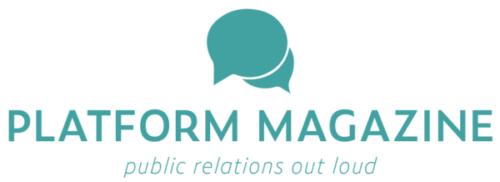The Science Behind Great Headlines
Published on October 29, 2025, at 1:44 p.m.
by Emma Breithaupt
Main concept/message for the article: The article explores the psychology and strategy behind effective headlines, examining how they capture attention, shape public perception and balance engagement with integrity in today’s digital media landscape.
Before anyone reads a story, the headline has already spoken for it. Headlines serve as the first point of contact between content and audience, shaping readers’ perceptions before they even reach the first sentence. The impact of a strong headline goes beyond clicks. It frames narratives and guides conversations to influence trends. A well-crafted headline has the power to shape how people perceive the news itself.
Dr. S. Shyam Sundar, co-director of Penn State’s Media Effects Research Lab, says headline success is based on eye-catching wording. “There are many strategies for writing headlines that grab attention, often measured by how many people click on them,” Sundar explains. This means that crafting an effective headline all depends on the effectiveness of the wording itself.
The psychology of attention-grabbing headlines

Research shows that clear, concise and emotionally engaging headlines perform best. Meredith Cummings, a teaching assistant professor of journalism at Lehigh University, notes that both the platform and the audience play a significant role in which headlines succeed. “Good headlines use simple, clear language that’s easy to digest. They also pique someone’s curiosity,” Cummings explains. This changes from platform to platform. Social media, for example, favors concise, curiosity-driven headlines while traditional outlets often rely on straightforward phrasing.
The rise of social media has transformed headline writing, making headlines more conversational and “chatty.” Sundar notes that these techniques are increasingly influencing mainstream media headlines. Audience demographics also play a key role. Cummings explains that older readers often prefer traditional, informative headlines while younger audiences are drawn to witty or provocative phrasing. “A news outlet that caters to an older audience will have a different headline than a platform that is digital-first,” Cummings says. This shift challenges publishers to balance accuracy and integrity while still capturing attention.
Balancing accuracy and engagement
The tension between creating attention-grabbing headlines and maintaining integrity is often called the “holy grail” of news writing. Sensationalism may attract clicks temporarily but can take away credibility over time. Both Sundar and Cummings emphasize that headlines should highlight unusual or newsworthy aspects without misleading the audience. For example, Sundar illustrates that a story about “man bites dog” grabs attention because it is unexpected, unlike a story about “dog bites man.” He cautions, however, that exaggerating facts to increase clicks can damage readers’ trust. The Sydney Sweeney American Eagle advertisement this summer exemplified just that, with news outlets posting titles such as “Is Sydney Sweeney’s career over?” and “How Sydney Sweeney became the poster girl for Trump’s America”. These titles are potentially damaging to Sweeney’s reputation by providing the reader with a false sense of understanding without fully reading the article.

“Clickbait” techniques, such as using questions, numbers or emotionally charged words, tap into readers’ curiosity and desire for information. Dr. Sundar’s research identifies listicles, “WH questions” (who, what, where, why) and curiosity-based phrasing as particularly effective. According to an article published in Nature’s Humanities and Social Sciences Communications, headlines that spark curiosity or provide actionable information consistently increase engagement.
Analytics also play a key role in balancing accuracy and engagement. By examining audience responses and reading habits, publishers can refine headlines to create interest without sacrificing ethics and truth. For example, if analytics show that readers prefer “solution-oriented” content, a headline like “How scientists are working to prevent a deadly disease”, vs. “This deadly disease is causing deaths across the country.” PR professionals can craft more effective headlines by considering the audience’s educational background and media literacy.
How headlines are evolving
Emerging technologies, including AI, are beginning to influence headline creation. AI can generate optimized headline options, but human editors are important for context and SEO adjustments. While AI offers efficiency, humans usually provide better results because they can tailor information to specific audiences and platforms. AI won’t replace the effectiveness of a headline that a human can write.

Sundar predicts that headlines will continue evolving toward conversational and personalized formats, using algorithms to match content to individual readers’ interests. “Headlines are becoming more conversational as they evolve. With the rise of artificial intelligence, these headlines might become prompts for readers to respond,” he says. As the media landscape changes, understanding the psychology behind attention, engagement and perception will be crucial for effective PR writing.
Additionally, incorporating numbers, questions or emotionally engaging language can increase engagement by showing urgency—such as “3 traditions that make Alabama football unforgettable” or “How do fans shape a team’s legacy?”
Beyond word choice, headline effectiveness depends on understanding audience psychology. Readers are drawn to headlines that promise insight or emotion. “Curiosity gaps” that hint at information without revealing it entirely encourage clicks when used ethically. At the same time, trust remains essential.
It’s all about the headline
Ultimately, headlines are both an art and a science. By drawing on psychological insights, platform-specific trends and audience analytics, PR professionals and content creators can craft headlines that attract readers ethically and meaningfully—inviting them not just to click, but to stay, read and connect with the story behind the words.




